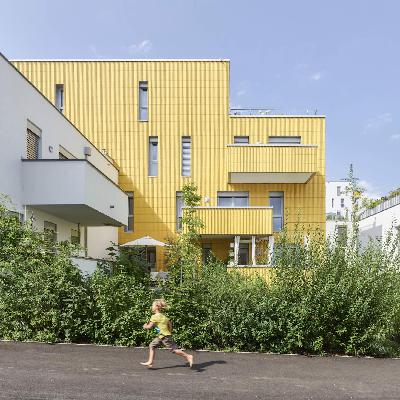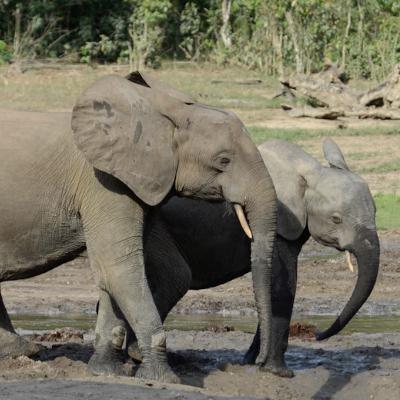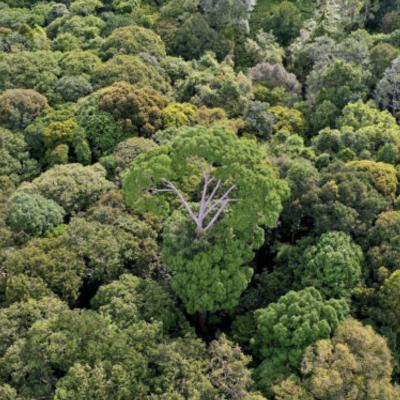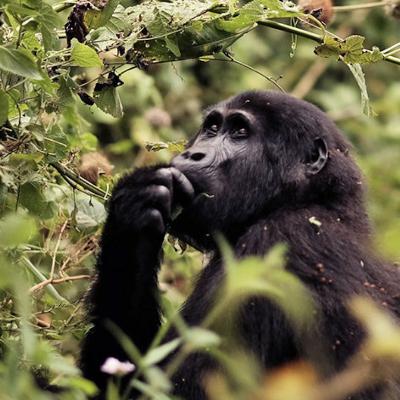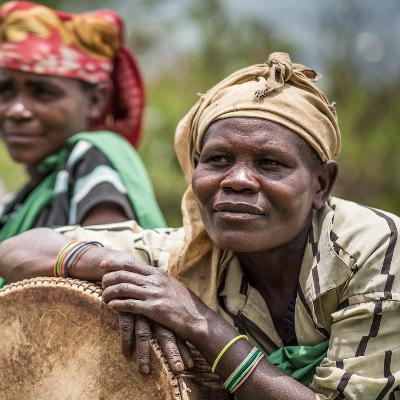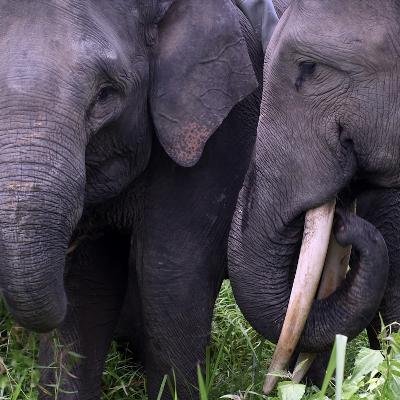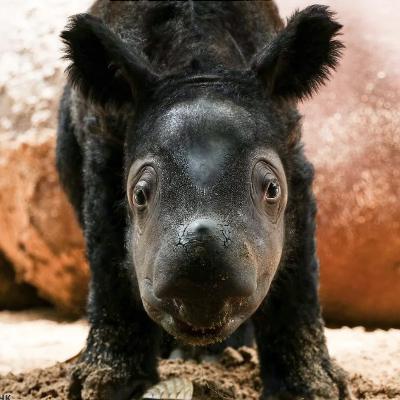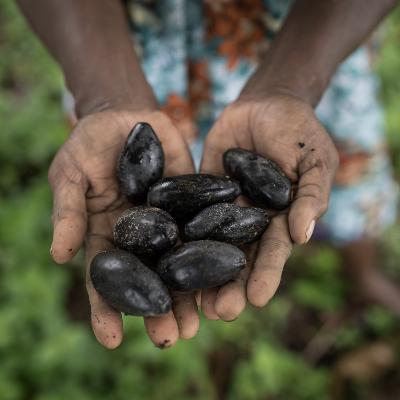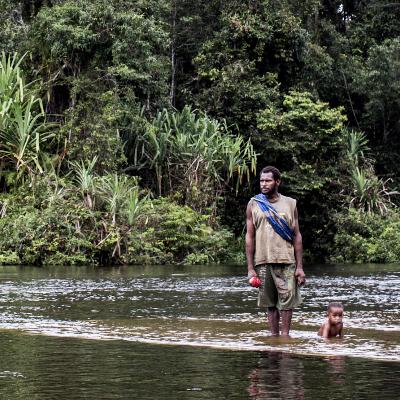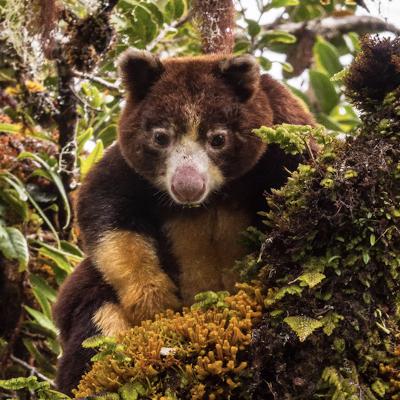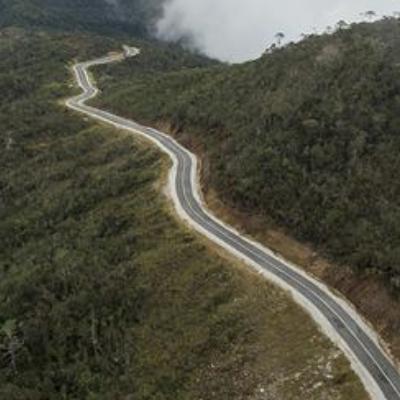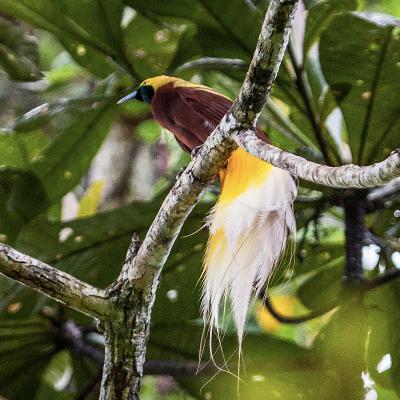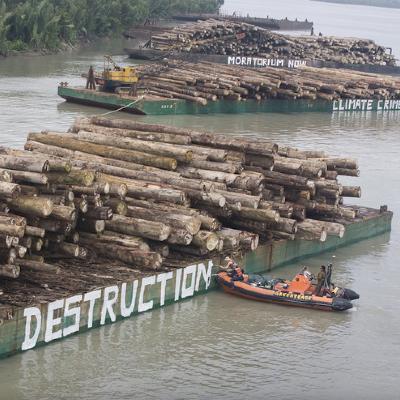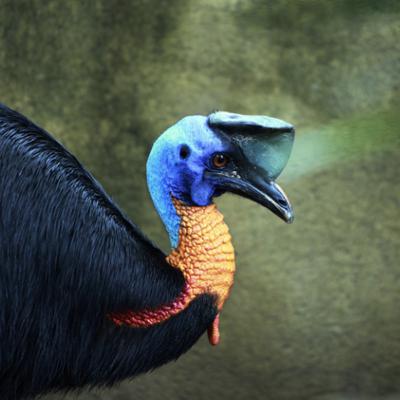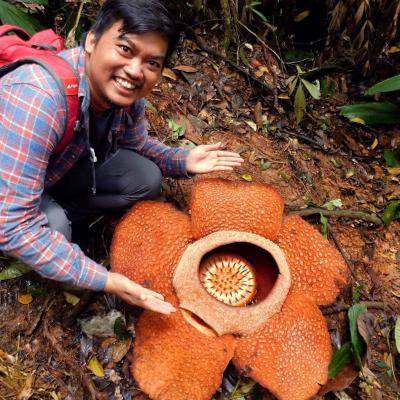Discover Mongabay Explores
Mongabay Explores

Mongabay Explores
Author: Mongabay.com
Subscribed: 7Played: 44Subscribe
Share
© 2021-2023
Description
A podcast about the world's unique places and species – from areas of amazing natural heritage to environmental challenges and conservation solutions – hear inspiring conversations with experts, scientists, authors, and activists on Mongabay Explores.
36 Episodes
Reverse
According to UN-Habitat, a global housing affordability crisis is underway, with 1.6 billion people currently in need of adequate, affordable homes. That number could rise to three billion in just a few years. Home prices in urban markets have reached "impossible" levels of unaffordability while temperatures continue to rise as a result of climate change. On this third episode of the Mongabay Explores podcast season on the circular economy — the effort to design goods to be less resource-intensive, from their manufacture to disposal and recycling — Louise Dorignon, a postdoctoral research fellow and housing circularity expert at RMIT University in Melbourne, details this housing reform plan to address sustainability in the most unaffordable housing market in the English-speaking world: Australia. Researchers at RMIT University in Melbourne have devised a framework for combatting this housing shortage, improving housing circularity, and reducing emissions from construction to help alleviate the housing sector's contributions to climate change. "Our goal was to find out how implementing a circular economy approach can lead to a more sustainable housing system. And we didn't want to juxtapose sustainability and circular economy as two different things. But instead, we wanted to see how they work together," Dorignon says. Listen to the first two episodes of Mongabay Explores the Circular Economy here and here. Mongabay Explores is a podcast series investigating some of the biggest environmental issues of our time, and the people working to solve them. This conversation is the third episode of the fifth season. To listen to them all, simply subscribe to or follow Mongabay Explores wherever you listen to podcasts, from Apple to Spotify, and you can also listen to all episodes here on the Mongabay website. Image credit: Die Sonnenblumenhäuser is a housing project in Vienna's Wildgarten neighborhood. The 11-building plan is an evolution of an award-winning project from the Europan 10 competition, which values "sustainable projects capable of creating urban intensity while taking care of the environment." Arenas Basabe Palacios built 82 units as commissioned by the Vienna city council, which owns the land. Image courtesy of Kurt Hoerbst. Timecodes (00:00) A more sustainable and affordable housing system (02:18) How do we make housing circular? (07:36) Curious case studies (12:57) First pillar: Reappraising value (18:23) Second pillar: Shaping markets with regulation (22:06) Third pillar: Tilting investment flows (23:57) Fourth pillar: Building capacity and skills (27:38) Australia's housing affordability crisis (34:54) The problem with using housing as an investment (38:57) Addressing vacant homes (40:53) Which nation is 'getting it right?' (44:39) One thing to change right now
In 2016, Finland became the first nation to design a circular economy roadmap, in an effort to design goods to be less resource-intensive, from their manufacture to disposal and recycling. Tim Forslund of the Finnish Innovation Fund (SITRA) was one of its architects and joins this episode of Mongabay Explores to detail his nation's circularity plan and the challenges ahead. Over 50 nations now have such plans in development, and while Finland is years ahead of them all, it hasn't yet seen a reduction in its economy's resource consumption so far. Forslund explains why, and how policies implemented today may only produce results much later. "We're seeing a lot of these policies being implemented, but it will take more [time] to see the change." Read more on Finland's circular economy roadmap by Mongabay contributor Sean Mowbray here: Lessons from Finland's attempt to transition to a circular economy Subscribe to or follow Mongabay Explores wherever you listen to podcasts, from Apple to Spotify. You can also listen to all episodes here on the Mongabay website. Image Credit: Finland has produced innovative solutions seeking to increase circularity in the textile sector. For example, a pilot project incentivizing textile collection in the city of Lahti claimed a 500% increase in recycling rates. Companies such as Spinnova are adopting methods that use renewable resources, such as wood. Other circular solutions, including expanding markets for recycled materials, increasing circularity in design, and reducing consumption, are required, experts say. Image courtesy of Lounais-Suomen Jätehuolto. Timecodes (00:00) Introduction (02:17) It's Not Just Finland (05:58) Sector by Sector, Country by Country (11:30) Roadblocks and Challenges (17:16) Policy and Market-Based Solutions (20:17) A 'Greenlash' to Mandates? (25:37) Slowing Down Fast Fashion (29:07) Plastics Recycling (31:33) Transforming Education (33:50) Designing Solutions for People (36:41) Credits
The fifth season of Mongabay Explores dives into the circular economy: the effort to design goods to be less resource intensive, from their manufacture to disposal and recycling. In this episode, we speak with circular economy researcher and policy expert Jessika Richter, associate senior lecturer at Lund University in Sweden, who discusses the environmental and social impacts of electric vehicles (EVs), and what we can do to mitigate them. As she says, any conversation about solving transportation emissions that only discusses cars misses the bigger picture: "We need to go back to, exactly, what do we need? And are there different ways we can solve this? Again, public transport, biking, walking need to be part of the discussion when we're talking about transport. It can't be just about cars, and any conversation that is just about cars or vehicles is too narrow at solving a problem, because it's only going to be shifting things," says Richter. Read more on the circularity of electric vehicles from contributor Sean Mowbray here: EVs offer climate hope, but total auto supply chain revamp is vital Internal combustion vs. EVs: Learning from the past to boost sustainability Mongabay Explores is our in-depth podcast series which investigates some of the most significant environmental issues of our time. Check this podcast's feed to hear previous seasons about Congo rainforest conservation issues, and other compelling topics. Image credit: While electric vehicles have no tailpipe emissions, there are a lot more factors involved in producing a car: steel, tires and people affected along the supply chain. Image by Ivan Radic via Flickr (CC BY 2.0). --- Time codes (00:00) Introduction (03:28) The benefits of EVs (05:02) The costs (08:04) Cleaning up the supply chain (13:33) It's not just about cars (17:30) Rethinking how we use urban centers (22:28) To retrofit or not to retrofit? (27:41) Mining and NIMBYism (34:35) Pricing externalities for real (35:42) Credits
In the Democratic Republic of Congo (DRC), pollution from extracting minerals commonly used in the energy transition like cobalt and copper is on the rise, and miners generally ignore their legal obligations to clean it up. Cases of such pollution have killed and displaced people and caused major health problems, say residents and community organizations. The DRC is estimated to hold 64% of the world's cobalt reserves (3.5 million tons of cobalt, plus 31 million tons of copper) and could benefit from these metals by becoming a major player in the energy transition. But the state-owned mining company, Gécamines, is itself not immune, and is also a shareholder in several other companies, some of which are accused of these same rights abuses. In the investigation you're about to hear, Mongabay visited several villages in Lualaba Province affected by pollution and human rights violations, to assess the state of the unresolved damages. This story is supported by the Pulitzer Center's Rainforest Investigation Network. If you missed the first six episodes of our podcast series on the Congo Basin, please subscribe to Mongabay Explores wherever you get your podcasts from, and follow the links below: Forest elephants are the 'glue' holding Congo rainforests together What would it cost to protect the Congo Rainforest? A just energy transition requires better governance & equity in the DRC Big potential and immense challenges for great ape conservation in the Congo Basin, experts say Congo Basin communities left out by 'fortress conservation' fight for a way back in Mongabay Explores the Congo Basin: The 'heart of the world' is at a turning point Find the first three seasons of Mongabay Explores – where we explored Sumatra, New Guinea, and more – via the podcast provider of your choice, or locate all episodes of the Mongabay Explores podcast on our podcast homepage here. Image: Ruined homes and shops in Kabwe Village. In 2018 an accident caused by Mutanda Mining, a subsidiary of Anglo-Swiss company Glencore, cost the lives of 21 people here. They company has not completed the compensation process for the victims. Photo by Didier Makal for Mongabay. --- Timecodes: (00:00) Introduction (01:27) Bye bye Kabombwa (02:50) Fleeing pollution in Gécamines and Musonoïe (04:55) Mines, the economic lifeblood of the DRC (08:48) Forgotten victims, stolen livelihoods
The African forest elephant (Loxodonta cyclotis) plays a critical role in shaping the Congo rainforest, experts say. Though they represent incalculable and intrinsic value, there is much scientists still do not know about this critically endangered species of megafauna. On this final episode of the Congo Basin season of Mongabay Explores, Fiona "Boo" Maisels, a conservation scientist at the Wildlife Conservation Society, and Andrew Davies, assistant professor of organismic and evolutionary biology at Harvard University, detail the 'irreplaceable' value of African forest elephants, what would happen if we lose them, and why they need urgent protection. If you missed the first five episodes of this podcast series, please subscribe to Mongabay Explores wherever you get your podcasts from, and follow the links below: What would it cost to protect the Congo Rainforest? A just energy transition requires better governance & equity in the DRC Big potential and immense challenges for great ape conservation in the Congo Basin, experts say Congo Basin communities left out by 'fortress conservation' fight for a way back in Mongabay Explores the Congo Basin: The 'heart of the world' is at a turning point Find the first three seasons of Mongabay Explores –where we explored Sumatra, New Guinea, and more –via the podcast provider of your choice, or locate all episodes of the Mongabay Explores podcast on our podcast homepage here. Sounds heard during this episode: Soundscape recording from the Dzanga Bai forest clearing in the Dzanga Sangha Protected Area in the Central African Republic, where elephants aggregate in very large numbers. It is likely that there were 80 elephants or more at the clearing at the time of the recording, which was shared by The Elephant Listening Project at the K. Lisa Yang Center for Conservation Bioacoustics, Cornell Lab of Ornithology. Image Credit: Forest elephants, pictured in Central African Republic. Photo ©Cristián Samper/WCS
How much does it cost to protect the Congo Rainforest? The world's second-largest rainforest provides critical ecological services that millions of people and myriad species rely on. It is also a massive carbon sink, storing tens of billions of tons of carbon in its trees, soils and peatlands. One would think protecting it would be an international priority, and yet funding commitments have historically struggled to adequately finance forest protection in the region. Experts say many commitments end before funding can be fully disbursed, and efforts rarely translate to a better life for local communities who live in these forests. For episode five of Mongabay Explores the Congo Basin, we speak with experts who explain the challenges of financing forest protection in the region and what's needed to address gap: Paolo Cerutti, senior scientist and DRC unit head at the Center for International Forestry Research (CIFOR-ICRAF); Chadrack Kafuti at Ghent University; Wahida Patwa Patwa-Shah, senior regional technical specialist, UNDP Climate Hub; and Lee White, minister of water, forests, the sea and environment in Gabon. If you missed the first four episodes of this podcast series, please subscribe to Mongabay Explores wherever you get your podcasts from, or click on the links below: A just energy transition requires better governance & equity in the DRC Big potential and immense challenges for great ape conservation in the Congo Basin, experts say Congo Basin communities left out by 'fortress conservation' fight for a way back in Mongabay Explores the Congo Basin: The 'heart of the world' is at a turning point Find the first three seasons of Mongabay Explores – where we explored Sumatra, New Guinea, and more – via the podcast provider of your choice, or locate all episodes of the Mongabay Explores podcast on our podcast homepage here. Episode Artwork: Rainforest in Gabon in the Congo Basin, which is home to chimpanzees. Natural forest has far greater biodiversity and carbon storage value than tree plantations. Photo credit: ZB / Mongabay. Sounds heard during the intro and outro: The call of a putty-nosed monkey (Cercopithecus nictitans). This soundscape was recorded in Ivindo National Park in Gabon by Zuzana Burivalova, Walter Mbamy, Tatiana Satchivi, and Serge Ekazama. Please invite your friends to subscribe to Mongabay Explores wherever they get podcasts. If you enjoy our podcast content, please visit www.patreon.com/mongabay to pledge a dollar or more to keep the show growing, Mongabay is a nonprofit media outlet and all support helps!
The global 'just energy transition' has increased demand for critical minerals – such as cobalt and copper – for products like lithium-ion batteries, solar panels, and other renewable energy sources. The Democratic Republic of Congo (DRC), which produces nearly 70% of the global supply of cobalt, has a poorly regulated mining sector that's fueled by demand for these natural resources and which has forced Indigenous communities off their land and otherwise done little to lift millions of Congolese citizens out of poverty. The DRC has now opened up land for oil and gas exploration, too, and experts are skeptical that oil will do much to improve people's lives, either. Christian-Geraud Neema Byamungu, Francophone editor at the China Global South Project, and Joseph Itongwa Mukumo, an Indigenous community member of Walikale in the North Kivu province, and director of ANAPA-DRC, speak with Mongabay about what DRC residents need for a just energy transition, and the impacts mining has had on lives and the environment. If you missed the first three episodes of this podcast series, please subscribe to Mongabay Explores wherever you get your podcasts from, or click on the links below: Mongabay Explores the Congo Basin: The 'heart of the world' is at a turning point Congo Basin communities left out by 'fortress conservation' fight for a way back in Big potential and immense challenges for great ape conservation in the Congo Basin, experts say Find the first three seasons of Mongabay Explores – where we explored Sumatra, New Guinea, and more – via the podcast provider of your choice, or locate all episodes of the Mongabay Explores podcast on our podcast homepage here. Episode Artwork: Cobalt, copper and malachite from a copper mine in the DRC. Image by Flickr (CC BY-SA 2.0) Sounds heard during the intro and outro: The call of a putty-nosed monkey (Cercopithecus nictitans). This soundscape was recorded in Ivindo National Park in Gabon by Zuzana Burivalova, Walter Mbamy, Tatiana Satchivi, and Serge Ekazama. Please invite your friends to subscribe to Mongabay Explores wherever they get podcasts. If you enjoy our podcast content, please visit www.patreon.com/mongabay to pledge a dollar or more to keep the show growing, Mongabay is a nonprofit media outlet and all support helps!
Recent research shows that great apes of the Congo Basin stand to lose up to 94% of their habitat due to climate change. In the world's only habitat of bonobos and mountain gorillas, time (and land) is running out to save them. Hunting, natural resource extraction, disease, and other human impacts threaten their prospects. On this episode of the Mongabay Explores podcast, we speak with Terese Hart, a researcher with the ICCN (the Congolese Institute for the Conservation of Nature); Gladys Kalema-Zikusoka, a wildlife veterinarian and founder of the NGO Conservation Through Public Health; Kirsty Graham, a researcher from the University of St Andrews; and Sally Coxe, co-founder and president from the Bonobo Conservation Initiative about the importance of great apes, the potential they have for the protection of the Congo rainforest, and the challenges that persist in protecting them. If you missed the first two episodes of this podcast series, please subscribe to Mongabay Explores wherever you get your podcasts from, or click on the links below: Mongabay Explores the Congo Basin: The 'heart of the world' is at a turning point Congo Basin communities left out by 'fortress conservation' fight for a way back in Find the first three seasons of Mongabay Explores – where we explored Sumatra, New Guinea, and more – via the podcast provider of your choice, or locate all episodes of the Mongabay Explores podcast on our podcast homepage here. Episode Artwork: Uganda's Bwindi Impenetrable National Park is a sanctuary for half of the world's remaining population of endangered mountain gorillas, alongside forest elephants and many other species. Image by Brian Harries via Flickr (CC BY 2.0). Sounds heard during the intro and outro: The call of a putty-nosed monkey (Cercopithecus nictitans). This soundscape was recorded in Ivindo National Park in Gabon by Zuzana Burivalova, Walter Mbamy, Tatiana Satchivi, and Serge Ekazama. Please invite your friends to subscribe to Mongabay Explores wherever they get podcasts. If you enjoy our podcast content, please visit www.patreon.com/mongabay to pledge a dollar or more to keep the show growing, Mongabay is a nonprofit media outlet and all support helps! See all our latest news from nature's frontline at Mongabay's homepage: news.mongabay.com or find us on Facebook, Twitter, Instagram and TikTok by searching for @mongabay. Feedback is always welcome: submissions@mongabay.com.
The debate about how to best protect the Congo Basin's rainforest increasingly finds experts and Indigenous leaders arguing that it's time for a change, one that brings local and Indigenous people into the conversation. Fortress conservation, a model exported to Africa during the colonial era, typically expels local people from land they once relied on for food, fiber and medicine, but experts argue the concept that this model uses – that of a 'pristine wilderness' untouched by humans – is a flawed construct. Many protected areas in Africa still use this conservation model, though, to the detriment of local people, sometimes resulting in violence. On this episode of Mongabay Explores the Congo Basin, we interview lawyer and Goldman Prize-winner Samuel Nguiffo, Mongabay features writer Ashoka Mukpo, and conservation and Indigenous relations expert Vedaste Cituli about the legacy of fortress conservation in the Congo Basin, how the militarization of rangers has exacerbated tension with local people, and potential pathways forward to return some conservation control to local and Indigenous populations. Find the first three seasons of Mongabay Explores – where we explored Sumatra, New Guinea, and more – via the podcast provider of your choice, or locate all episodes of the Mongabay Explores podcast on our podcast homepage here. Episode Artwork: The Indigenous Batwa were evicted from their forest home in Uganda in the early 1990s when Mgahinga Gorilla National Park was established, leaving them landless and poor in a society that saw them as a lower class. Image by USAID Biodiversity & Forestry via Flickr (Public Domain). Sounds heard during the intro and outro: The call of a putty-nosed monkey (Cercopithecus nictitans). This soundscape was recorded in Ivindo National Park in Gabon by Zuzana Burivalova, Walter Mbamy, Tatiana Satchivi, and Serge Ekazama. Please invite your friends to subscribe to Mongabay Explores wherever they get podcasts. If you enjoy our podcast content, please visit www.patreon.com/mongabay to pledge a dollar or more to keep the show growing, Mongabay is a nonprofit media outlet and all support helps! See all our latest news from nature's frontline at Mongabay's homepage: news.mongabay.com or find us on Facebook, Twitter, Instagram and TikTok by searching for @mongabay. Feedback is always welcome: submissions@mongabay.com.
The Congo Basin contains the world's second-largest rainforest, a staggering 178 million hectares: containing myriad wildlife and giant trees plus numerous human communities, it is also one of the world's biggest carbon sinks. On this first episode of a new season of Mongabay Explores, we take you to the Congo Basin and begin with the Democratic Republic of the Congo (DRC), which contains 60% of central Africa's forest, but which also aims to open up protected areas and forested peatlands to oil and gas development. We speak with Adams Cassinga, a DRC resident and founder of Conserv Congo, and Joe Eisen, executive director of Rainforest Foundation UK, about the environmental and conservation challenges faced by the DRC and the Congo Basin in general. Find the first three seasons of Mongabay Explores – where we explored Sumatra, New Guinea, and more – via the podcast provider of your choice, or locate all episodes of the Mongabay Explores podcast on our podcast homepage here. Episode Artwork: A girl carries fruit back to Konye village. As industrial agricultural techniques spread into forests of the Congo Basin, alternatives like agroforestry that can benefit farmers, consumers and natural resources are also on the rise. Image © Greenpeace / John Novis Sounds heard during the intro and outro: The call of a putty-nosed monkey (Cercopithecus nictitans). This soundscape was recorded in Ivindo National Park in Gabon by Zuzana Burivalova, Walter Mbamy, Tatiana Satchivi, and Serge Ekazama. Please invite your friends to subscribe to Mongabay Explores wherever they get podcasts. If you enjoy our podcast content, please visit www.patreon.com/mongabay to pledge a dollar or more to keep the show growing, Mongabay is a nonprofit media outlet and all support helps! See all our latest news from nature's frontline at Mongabay's homepage: news.mongabay.com or find us on Facebook, Twitter, Instagram and TikTok by searching for @mongabay. Feedback is always welcome: submissions@mongabay.com.
Leif Cocks returns to the podcast to discuss the status of the Sumatran elephant, a critically endangered species that we discussed with him in season 2, which is estimated to have less than 10 years to find a conservation solution or face extinction: he says the ranks of passionate, young Indonesian conservationists he's recently met that are working for the iconic animals' future gives him great hope. He also shares an update on the critically endangered Tapanuli orangutan, whose land is threatened by a controversial hydroelectric project in North Sumatra, which has also claimed the lives of 16 workers in less than two years. To hear our previous conversation with Leif, find episode 6 of season 2, or listen here: Podcast: With just 10 years left to save Sumatran elephants, what can be done now? To listen to our previous conversation with him about the Tapanuli orangutan, find episode 4 of season 2, or go here: Podcast: Will a newly discovered ape species face a dammed future? Related Reading: 'Chased from every side': Sumatran elephants pinned down by forest loss Photos: Meet the Indonesians on the front lines of human-elephant conflict in Sumatra 'Cursed' dam project in orangutan habitat claims 16th life in less than 2 years If you missed the ten part series of Mongabay Explores Sumatra, you can find them via the podcast provider of your choice, or locate all episodes of the Mongabay Explores podcast on our podcast homepage here. Episode Artwork: Sumatran elephants in Bukit Barisan National Park. Photo by Rhett A. Butler/Mongabay. Please invite your friends to subscribe to Mongabay Explores wherever they get podcasts. If you enjoy our podcast content, please visit www.patreon.com/mongabay to pledge a dollar or more to keep the show growing, Mongabay is a nonprofit media outlet and all support helps! See all our latest news from nature's frontline at Mongabay's homepage: news.mongabay.com or find us on Facebook, Twitter, Instagram and TikTok by searching for @mongabay. Feedback is always welcome: submissions@mongabay.com.
Indonesia's Ministry of Environment and Forestry recently announced the birth of an incredibly rare Sumatran rhino calf at a captive breeding facility at Way Kambas National Park in Indonesia's Lampung province. For this bonus episode of Mongabay Explores, we speak with Mongabay's senior staff writer for Indonesia, Basten Gokkon. He explains the significance of this event, the difficulty in breeding Sumatran rhinos, and what this birth means for the future of this critically endangered species. If you missed the ten part series of Mongabay Explores Sumatra, you can find them via the podcast provider of your choice, or locate all episodes of the Mongabay Explores podcast on our podcast homepage here. Related Reading: It's a girl: Super rare Sumatran rhino born in captive-breeding center Episode Artwork: A new Sumatran rhino calf born in Way Kambas sanctuary. Image courtesy of Indonesia's Environment and Forestry Ministry. Please invite your friends to subscribe to Mongabay Explores wherever they get podcasts. If you enjoy our podcast content, please visit www.patreon.com/mongabay to pledge a dollar or more to keep the show growing, Mongabay is a nonprofit media outlet and all support helps! See all our latest news from nature's frontline at Mongabay's homepage: news.mongabay.com or find us on Facebook, Twitter, Instagram and TikTok by searching for @mongabay. Feedback is always welcome: submissions@mongabay.com.
By 2025 the global, edible nut industry will be worth an estimated $2 billion. In Papua New Guinea (PNG), the traditional and plentiful staple, the galip nut (Canarium indicum), holds promise of tapping into that demand. Its relative ease of access for smallholder (non-commercial) farms means a new source of income for thousands of farmers across PNG. On this episode of Mongabay Explores, we speak with Dorothy Devine Luana, an entrepreneur from the province of East New Britain, whose company grows galip nuts using agroforestry, a farming technique rooted in traditional knowledge that grows multiple cash crops alongside woody perennials. We also speak with Nora Devoe, research program manager for a special project focused on the galip nut at the Australian Centre for International Agricultural Research (ACIAR). This project has been funding more than a decade of research seeking to understand the viability and potential of the galip nut to drive the canarium industry in PNG and foster new markets for entrepreneurs and locals like Dorothy to sell the crop. If you missed the first six episodes of Mongabay Explores New Guinea, you can find them via the podcast provider of your choice, or locate all episodes of the Mongabay Explores podcast on our podcast homepage here. Episode Artwork: Tinganagalip Women Cooperative Group Chairwoman Caroline Misiel holds a handful of canarium. ACIAR has been supporting research into the development of a canarium industry in Papua New Guinea. The group has been planting new canarium trees as well as exploring new value-added canarium products they can make such as canarium cakes and scones. Image by Conor Ashleigh. Sounds heard during the intro and outro include the following: rusty mouse-warbler, growling riflebird, raggiana/lesser bird-of-paradise, superb fruit-dove, long-billed honeyeater, little shrike-thrush, brown cuckoo-dove, black-capped lory. Special thanks to Tim Boucher and Bruce Beehler for identifying them. Please invite your friends to subscribe to Mongabay Explores wherever they get podcasts. If you enjoy our podcast content, please visit www.patreon.com/mongabay to pledge a dollar or more to keep the show growing, Mongabay is a nonprofit media outlet and all support helps! See all our latest news from nature's frontline at Mongabay's homepage: news.mongabay.com or find us on Facebook, Twitter, Instagram and TikTok by searching for @mongabay. Feedback is always welcome: submissions@mongabay.com.
The Tanah Merah project sits in the heart of New Guinea covering 2,800 square kilometers (1,100 square miles). Roughly twice the size of Greater London, it threatens not only dense, primary, tropical rainforest and Indigenous land, but also could release as much carbon as the U.S. state of Virginia emits by burning fossil fuels for an entire year. However, the true owners of the project have been hidden by a web of corporate secrecy for more than a decade. We speak with Philip Jacobson, senior editor at Mongabay, and Bonnie Sumner, investigative reporter at the Aotearoa New Zealand news outlet Newsroom, to discuss the project from inception to present day, the involvement of a New Zealand businessman, and where the project could go next. Related Reading: The Secret Deal to Destroy Paradise New Zealand developer denies key role in giant palm oil project in Indonesia If you missed the first five episodes of Mongabay Explores New Guinea, you can find them via the podcast provider of your choice, or locate all episodes of the Mongabay Explores podcast on our podcast homepage here. Episode Artwork: An Indigenous Auyu man and child in Boven Digoel. Image by Nanang Sujana for The Gecko Project. Sounds heard during the intro and outro include the following: rusty mouse-warbler, growling riflebird, raggiana/lesser bird-of-paradise, superb fruit-dove, long-billed honeyeater, little shrike-thrush, brown cuckoo-dove, black-capped lory. Special thanks to Tim Boucher and Bruce Beehler for identifying them. Please invite your friends to subscribe to Mongabay Explores wherever they get podcasts. If you enjoy our podcast content, please visit www.patreon.com/mongabay to pledge a dollar or more to keep the show growing, Mongabay is a nonprofit media outlet and all support helps! See all our latest news from nature's frontline at Mongabay's homepage: news.mongabay.com or find us on Facebook, Twitter, Instagram and TikTok by searching for @mongabay. Feedback is always welcome: submissions@mongabay.com.
New Guinea's dense tropical montane forests are home to 12 of 14 tree kangaroo species. Over the past couple of decades, conservationists have leveraged these charismatic, intelligent marsupials to spearhead community development, conservation efforts, and the establishment of protected areas. In Papua New Guinea, the Torricelli mountain range is home to three species of tree kangaroo, including the critically endangered tenkile. This mountain range sits in the crosshairs of a road project threatening to encroach upon the region; however, the government is in the process of reviewing a draft proposal to have it officially declared a protected area. For this episode of the podcast, we speak with Jim Thomas of the Tenkile Conservation Alliance and Lisa Dabek and Modi Pontio of the Tree Kangaroo Conservation Program. They detail the successes and challenges of working for nearly two decades in PNG to conserve these intelligent marsupials and the lands they inhabit. If you missed the first four episodes of Mongabay Explores New Guinea you can find them via the podcast provider of your choice or find all the episodes of the Mongabay Explores podcast on our podcast homepage here. Episode Artwork: A Matschie's tree kangaroo in the Wasaunon Field site in the YUS Conservation Area in Morobe Province in PNG. Image by Jonathan Byers. Courtesy of the Tree Kangaroo Conservation Program. Sounds heard during the intro and outro include the following: rusty mouse-warbler, growling riflebird, raggiana/lesser bird-of-paradise, superb fruit-dove, long-billed honeyeater, little shrike-thrush, brown cuckoo-dove, black-capped lory. Special thanks to Tim Boucher and Bruce Beehler for identifying them. Please invite your friends to subscribe to Mongabay Explores via Apple Podcasts or wherever they get podcasts. If you enjoy our podcast content, please visit www.patreon.com/mongabay to pledge a dollar or more to keep the show growing, Mongabay is a nonprofit media outlet and all support helps! See all our latest news from nature's frontline at Mongabay's homepage: news.mongabay.com or find us on Facebook, Twitter, Instagram and TikTok by searching for @mongabay. Feedback is always welcome: submissions@mongabay.com.
Spanning over 4,000 kilometers (2,500 miles) and being built over the course of decades, the Trans-Papua Highway cuts across the entire length of Indonesian New Guinea's two provinces, including 7 key protected areas. While the project is nearly complete, experts warn it will cost billions annually to maintain, and threaten to open up untouched rainforest to palm oil expansion contributing an additional 4.5 million hectares of deforestation by 2036. For this episode, we interviewed David Gaveau, founder of The TreeMap and Bill Laurance, distinguished professor, and director of the Center for Tropical, Environmental, and Sustainability Science at James Cook University in Australia. Both experts explained the environmental, financial, and social costs of the project, which runs through Indonesia's Lorentz National Park, a UNESCO World Heritage Site. If you missed the first three episodes of Mongabay Explores New Guinea you can find it via the podcast provider of your choice or find all the episodes of the Mongabay Explores podcast on our podcast homepage here. Episode Artwork: A part of the Trans Papua highway that snakes across Indonesia's easternmost provinces Papua and West Papua. Photo courtesy of Public Works and Housing Ministry. Editor's Note: Bill Laurance, is a Distinguished Research Professor at James Cook University in Cairns, Australia as well as the founder and director of ALERT (Alliance of Leading Environmental Researchers & Thinkers) and a member of Mongabay's advisory board. Sounds heard during the intro and outro include the following: rusty mouse-warbler, growling riflebird, raggiana/lesser bird-of-paradise, superb fruit-dove, long-billed honeyeater, little shrike-thrush, brown cuckoo-dove, black-capped lory. Special thanks to Tim Boucher and Bruce Beehler for identifying them. Please invite your friends to subscribe to Mongabay Explores wherever they get podcasts. If you enjoy our podcast content, please visit www.patreon.com/mongabay to pledge a dollar or more to keep the show growing, Mongabay is a nonprofit media outlet and all support helps! See all our latest news from nature's frontline at Mongabay's homepage: news.mongabay.com or find us on Facebook, Twitter, Instagram and TikTok by searching for @mongabay. Feedback is always welcome: submissions@mongabay.com.
New Guinea is home to the third-largest tropical rainforest in the world—of which 80% is still intact. The two-nation island also contains 44 species of unique birds-of-paradise and dense biodiverse regions unlike anywhere else on the planet. Because of its one-of-a-kind biodiversity, and relatively undeveloped landscape, New Guinea is in a unique position to conserve its forest cover as part of an economy that serves its local inhabitants, rather than extracting from and deforesting these communities. For this third episode of the New Guinea season, Mongabay interviews Bustar Maitar, CEO of EcoNusa, and biologist Edwin Scholes from the Cornell Lab of Ornithology about the diverse and charismatic birds-of-paradise and the potential for New Guinea to harness ecotourism to power a sustainable economy. If you missed the first two episodes of Mongabay Explores New Guinea you can find it via the podcast provider of your choice or find all the episodes of the Mongabay Explores podcast on our podcast homepage here. Episode Artwork: A Cendrawasih (bird of paradise) on a tree in Malagufuk village, located in the rainforest in Kalasou valley, Sorong, West Papua. Copyright: Jurnasyanto Sukarno/Greenpeace Sounds heard during the intro and outro include the following: rusty mouse-warbler, growling riflebird, raggiana/lesser bird-of-paradise, superb fruit-dove, long-billed honeyeater, little shrike-thrush, brown cuckoo-dove, black-capped lory. Special thanks to Tim Boucher and Bruce Beehler for identifying them. Please invite your friends to subscribe to Mongabay Explores wherever they get podcasts. If you enjoy our podcast content, please visit www.patreon.com/mongabay to pledge a dollar or more to keep the show growing, Mongabay is a nonprofit media outlet and all support helps! See all our latest news from nature's frontline at Mongabay's homepage: news.mongabay.com or find us on Facebook, Twitter, Instagram and TikTok by searching for @mongabay. Feedback is always welcome: submissions@mongabay.com.
Since 2014, Papua New Guinea has been the world's largest tropical timber exporter: more than 70% of that is considered illegal. Timber companies continue to possess land originally owned by local Indigenous communities through legal loopholes: while the carbon market has gained popularity as an alternative source of revenue for Indigenous communities, it suffers from some of the same land rights abuses as timber extraction. For this episode of Mongabay Explores we interview Gary Juffa, governor of Oro province in Papua New Guinea, and investigative journalist, Rachel Donald. If you missed episode one of Mongabay Explores New Guinea you can find it via the podcast provider of your choice or find all the episodes of the Mongabay Explores podcast on our podcast homepage here. Episode artwork: Greenpeace activists paint 'Forest Destruction',' Climate Crime' and 'Moratorium Now' on barges of illegally felled trees. The logs wait on Paia Port waterways - prevented from being loaded onto the 'Harbour Gemini' ship in the rainforests of the 'Turama extension' logging concession, Gulf Province. Image by Jeremy Sutton-Hibbert for Greenpeace. Sounds heard during the intro and outro include the following: rusty mouse-warbler, growling riflebird, raggiana/lesser bird-of-paradise, superb fruit-dove, long-billed honeyeater, little shrike-thrush, brown cuckoo-dove, black-capped lory. Special thanks to Tim Boucher and Bruce Beehler for identifying them. Please invite your friends to subscribe to Mongabay Explores wherever they get podcasts. If you enjoy our podcast content, please visit www.patreon.com/mongabay to pledge a dollar or more to keep the show growing, Mongabay is a nonprofit media outlet and all support helps! See all our latest news from nature's frontline at Mongabay's homepage: news.mongabay.com or find us on Facebook, Twitter, Instagram and TikTok by searching for @mongabay. Feedback is always welcome: submissions@mongabay.com.
New Guinea is one of the most most biodiverse regions on the planet and also the world's largest tropical island. It makes up less than 0.5% of the world's landmass, but is estimated to contain as much as 10% of global biodiversity. To unpack the vast biodiversity of New Guinea, conservation policy, and NGO efforts to protect land, culture and Indigenous rights, we spoke with Rodrigo Cámara-Leret, of the Department of Evolutionary Biology and Environmental Studies at the University of Zurich, Charlie Danny Heatubun, head of the research and development agency of the provincial government of West Papua, and Miriam Supuma of Synchronicity Earth. In this third season of the podcast, we take a look at what makes New Guinea unlike any other place in this world, the contributing environmental impacts that threaten its culture and biodiversity, and what is being done to protect it. Listen to the previous 2 seasons of Mongabay Explores via the podcast provider of your choice or find them at our podcast homepage here. Episode artwork: The stocky, flightless northern cassowary (Casuarius unappendiculatus) is one of the majestic birds that New Guinea is famous for. Image by Rhett Butler for Mongabay. Sounds heard during the intro and outro include the following: rusty mouse-warbler, growling riflebird, raggiana/lesser bird-of-paradise, superb fruit-dove, long-billed honeyeater, little shrike-thrush, brown cuckoo-dove, black-capped lory. Special thanks to Tim Boucher and Bruce Beehler for identifying them. Please invite your friends to subscribe to Mongabay Explores wherever they get podcasts. If you enjoy our podcast content, please visit www.patreon.com/mongabay to pledge a dollar or more to keep the show growing, Mongabay is a nonprofit media outlet and all support helps! See all our latest news from nature's frontline at Mongabay's homepage: news.mongabay.com or find us on Facebook, Twitter, Instagram and TikTok by searching for @mongabay. Feedback is always welcome: submissions@mongabay.com.
'I'm amazed how resilient, adaptable and optimistic the people of Sumatra are,' conservationist and HAkA Sumatra founder Farwiza Farhan says in the first moments of this episode about the women and communities she works with during the final episode of Mongabay's special series on Sumatra. The giant Indonesian island of course faces many environmental challenges, but there is also tremendous hope and good progress thanks to the work of people like her and educator Pungky Nanda Pratama, who also joins the show to describe how his Jungle Library Project & Sumatra Camera Trap Project are opening the eyes of the next generation to the need for protecting their fabulous natural heritage. Host Mike DiGirolamo shares the effectiveness of their efforts, what they are hopeful for, their biggest challenges, and the role of grassroots organizing in protecting and revitalizing the land, wildlife, and people of Sumatra. More about these guests' work: Farwiza Farhan: Women's Earth Alliance mentor & board member How one conservationist is sparking a 'young revolution' in Indonesia Saving Sumatran orchids from deforestation, one plant at a time Listen to the previous 9 episodes of Mongabay Explores Sumatra via the podcast provider of your choice or find them at our podcast homepage here. Episode artwork: Pungky with the biggest flower on Earth, Rafflesia arnoldii. Photo by Alek Sander. Please invite your friends to subscribe to Mongabay Explores wherever they get podcasts. You can access episodes to our sister series, the Mongabay Newscast, by downloading our free app in the Apple App Store and in the Google Store to have access to our latest episodes at your fingertips. If you enjoy our podcast content, please visit www.patreon.com/mongabay to pledge a dollar or more to keep the show growing, Mongabay is a nonprofit media outlet and all support helps! See all our latest news from nature's frontline at Mongabay's homepage: news.mongabay.com or find us on Facebook, Twitter, and Instagram by searching for @mongabay. Feedback is always welcome: submissions@mongabay.com.


